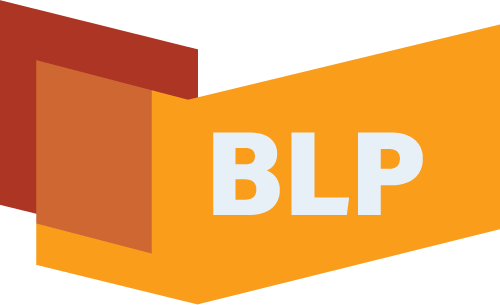The BLP can be administered by non-specialists, and takes respondents around 10 minutes to complete. The BLP may be administered in a paper-and-pencil format, or online in a self-scoring version.
All 19 items in the BLP elicit scaled numerical responses from bilingual individuals. Here is a sample item from the Language History module of the English – German version of the BLP.

If an English – German bilingual prefers to answer in German, they may choose to answer BLP in German. For example:

Self-Scoring Questionnaire (Online Version)
The BLP Questionnaire is available as a self-scoring Google form and spreadsheet for many language pairs. You must have an active Google account before you can use the Google forms.
How to Administer the Self-Scoring Test
- Create a Google Docs account or log in to your existing Google account.
- Click on the link to the BLP Questionnaire with the appropriate language combination or the blank template. This will give you the option to create a copy of the BLP form and results spreadsheet in your Google Drive account.
- After making a copy you will be taken automatically to the spreadsheet, but the Google form will be available in your Google Drive account. You can also jump to the form by going to Google Spreadsheet Menu > Form > Edit form.
- (Optional) Edit the form before sending it to participants. Caution: Editing the form is not advised if you want to use the self-scoring features. Changing the form or results spreadsheet in certain ways will break the self-scoring functionality.
- Send questionnaire link to testees via email or via Google Docs. The template contains instructions for testees detailing how to respond to and submit the questionnaire.
- View responses and scores in the Google spreadsheet linked to the questionnaire on your Google Docs account. You will not be alerted when questionnaires have been completed.
- Scores for all components are automatically calculated with the online version of the questionnaire. Formulas are pre-inserted into the Google Docs spreadsheet where responses are stored. Click on the tabs at the bottom of the spreadsheet to access Responses, Module Scores, and Dominance Scores (including Global Language Scores).
- Download the spreadsheet in Excel format for further score analysis.
Manual Scoring Procedure (Paper & Pencil Version)
How to Administer the Paper & Pencil Test
- Download the PDF of the BLP Questionnaire with the appropriate language combination to your computer.
- Print the form.
- Read directions aloud to testee.
- Allow testee to complete the form.
- Score questionnaire using the BLP scoring formula.
How to Score the Paper & Pencil Test
Question responses in the BLP are each associated with a number on a scale.
Step 1: Module Scores
Within each module, tally the point totals for each language separately based on the following guidelines. This will yield the language-particular score for each module.
Language History
- 6 questions: each worth between 0 and 20
- Each item is worth the numerical value given in the response, with three exceptions:
- The first two items are scored in the reverse: A “20” response is worth 0, a “19” is worth 1, and so on
- Phrasal responses “Since birth” and “For as long as I can remember” are worth 20 points
- “Not yet” is worth 0 points
Language Use
- 5 questions: each worth between 0 and 10
- Each item is worth the numerical value given in the response
Language Proficiency
- 4 questions: each worth between 0 and 6
- Each item is worth the numerical value given in the response
Language Attitudes
- 4 questions: each worth between 0 and 6
- Each item is worth the numerical value given in the response
Step 2: Global (Composite) Score Calculation
To ensure that each module receives equal weighting in the global language index, you need to multiply the score for each module (each language calculated separately) by the following adjustment factors:
| Language History | 0.454 |
| Language Use | 1.09 |
| Language Proficiency | 2.27 |
| Language Attitudes | 2.27 |
Add the adjusted module totals together to yield a global score for each language. Total points possible is 218.
Step 3: Dominance Index
To obtain the language dominance index, subtract one language total from the other to render a dominance score that ranges from -218 to +218. Scores approaching zero indicate balanced bilingualism. More positive or more negative scores reflect increased language dominance.

